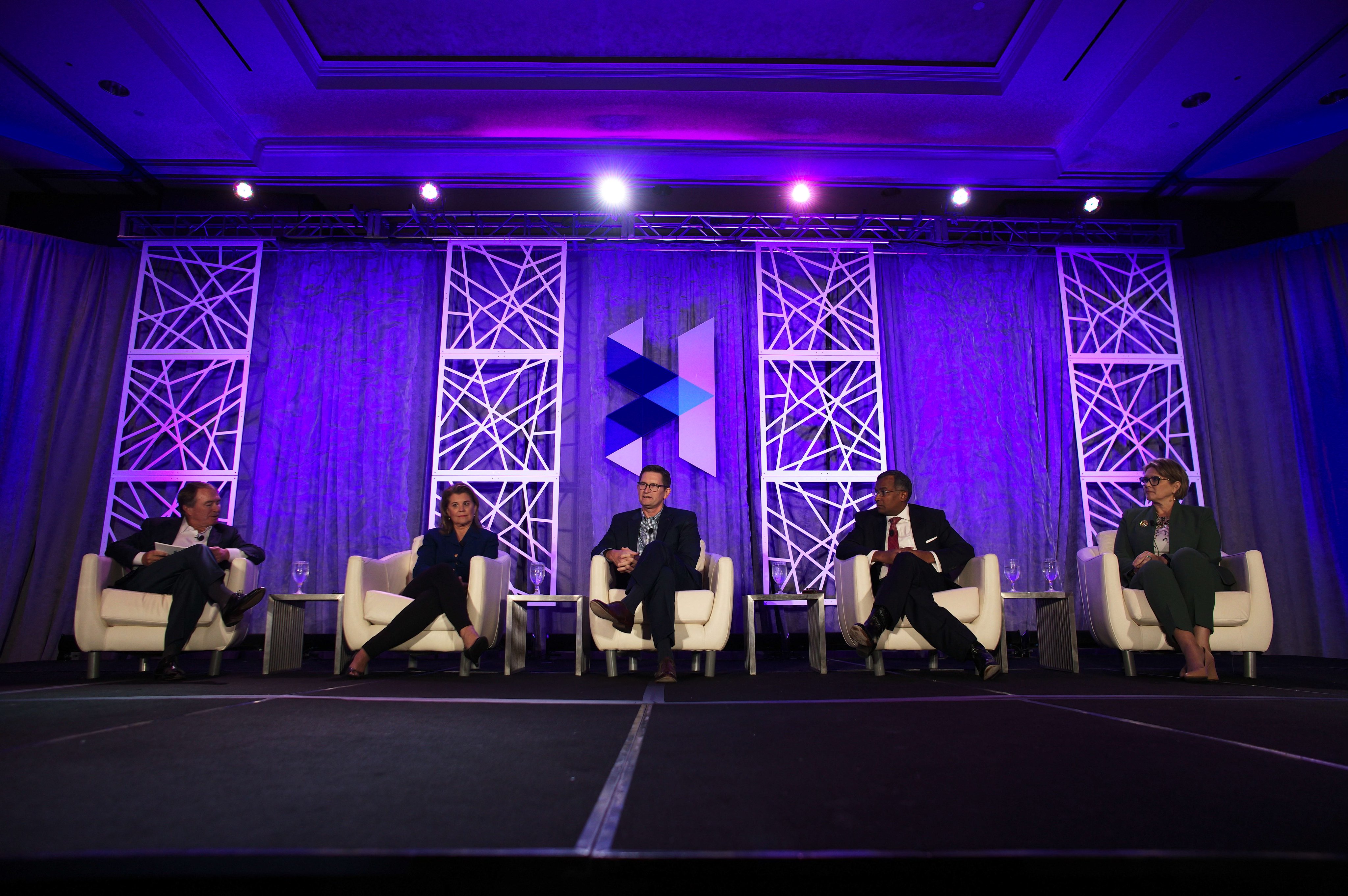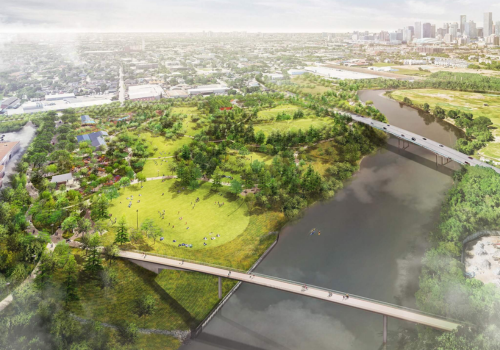Mobility, Digital Connectivity and Flood Mitigation are Focus of Inaugural State of Infrastructure
Published Oct 05, 2022 by A.J. Mistretta
Investment in infrastructure is critical to a community’s sustainable growth. Here in Houston, infrastructure takes many forms, from flood mitigation projects to expansion of critical highways. These and other topics were covered in the Partnership’s inaugural State of Infrastructure event on September 29.
Partnership President and CEO Bob Harvey told attendees that infrastructure investment in the region was on the right track, “but we must continue to come together and ensure our investments…are smart and are carried out in ways that fosters community.”
A panel of experts discussed infrastructure topics including broadband development, mass transit, flood mitigation and highway development. The panel moderated by Marc Watts, president of The Friedkin Group, featured:
- Toni Beck, Vice President, External Affairs, Comcast Texas Region
- Ed Jackson, Director, Federal Solutions and Technology, Jacobs
- Sanjay Ramabhadran, Chairman, Houston METRO
- Laura Ryan, Commissioner, Texas Department of Transportation
Here are just a few of the takeaways:
Ramabhadran on Mass Transit
“Our continued economic growth is tied to our ability to make quality of life improvements. We are in a competition for business and talent and if we want to ensure that continues, we need to make investments into what businesses and talent want.”
“We need to make sure we have safe, reliable, multimodal transportation options. It’s not an either-or approach to easing congestion, it has to be an all of the above approach."
Ramabhadran also said that bidirectional HOV lanes are important because millennials increasingly want to live in neighborhoods like the Heights, Midtown and Downtown, but work in places like Pearland, Sugar Land and other suburbs.
Ryan on Highway Infrastructure
“Whatever we build today has to plan for the unknown of tomorrow. The vision is that we create a really solid base that accounts for all the options...It’s going to take collaboration to get there.”
“We’ve taken a lot of the best we’ve been able to learn over time and included those things in the I-45 (NHHIP) project...There are a lot of ways that major infrastructure projects can improve quality of life because those things are intertwined.”
“We are a region of immense diversity but we have also historically been a region of respect and collaboration. We need more of that right now to advance infrastructure.”
Jackson on Flood Infrastructure
“You don’t develop flood infrastructure overnight. It takes time...How are we looking long term to ensure what we’re putting in the ground is the right solution and works into the future?”
“Infrastructure solutions have to include everyone, the varied faces that represent the Houston metro area.”
Beck on Broadband Infrastructure
“We have a digital divide--that’s a fact and it’s been there for way too long. The pandemic thrust it into the spotlight.”
However, said Beck, the circumstances of the digital divide in rural America and urban America are often different. “One in 10 households in the Houston area lack a computer. That’s the urban digital divide,” she said.
Harvey said with considerable momentum around infrastructure investment, “the Partnership is committed to working with our elected officials at all levels of government and community partners to ensure the region receives the resources needed to meet the demands of our growing community.”
 The Houston Report
The Houston Report





















